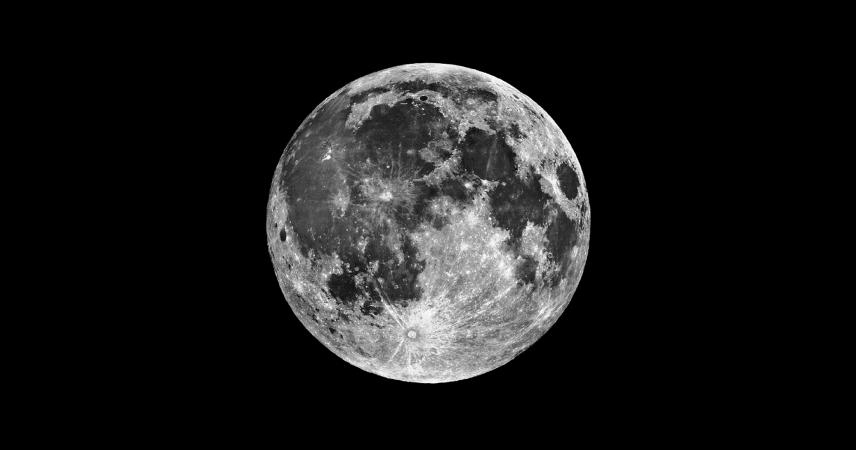The Moon is our planet’s only natural satellite and is the fifth largest in the solar system. The most widely-accepted hypothesis to explain its origin is the Giant Impact Hypothesis. According to this hypothesis, a Mars-sized protoplanet called Theia collided with the young Earth about 4,500 million years ago. As a result of the collision a huge cloud of debris was created. Earth’s gravity captured part of the debris, but a lot of this ended up orbiting close to Earth and gradually coalesced over millions of years until they formed the natural satellite that we now call the Moon.
It is thought that, at first, the Moon was much closer to the Earth and that over time it has gradually drifted apart. We now know that the Moon moves away from the Earth at a rate of approximately 3.8 cm a year.
The Moon’s diameter is approximately a fourth of the Earth’s and its gravity is much less: someone weighing 53 kilos would only weigh 9 kilos on the Moon.
Its gravity is too weak to have a gas blanket so the Moon has practically no atmosphere. This means that any space rock may crash into its surface as it won’t disintegrate when it crosses the atmosphere, as happens on the Earth. When it crashes into the surface, it produces a crater, like the one that can be touched in the 3D print that you will find on the dais. A curious thing about lunar craters, unlike those that impact the Earth, is that their traces remain intact as there is no erosion by wind or water.
We invite you to run your hands over the detailed representation of the geology of the Moon on the sphere on the dais. On its surface, one can also feel mountains, mountain ranges, or dark regions that the early observers confused with water and that, since then, have been called seas. These include the Sea of Serenity, the Sea of Tranquility, the Sea of Fertility, the Sea of Crises, the Sea of Rains, or the huge Ocean of Storms.
If you observe our satellite closely on days when there is a full moon, you will realise that it always shows the same side: this is due to the fact that the forces of gravity between the Earth and the Moon have slowed down the rotation of the Moon, so that it takes the same time to rotate on its axis as it does to go around the Earth, about 28 days.
One of the consequences of the complex gravitational system between the Earth, the Moon and the Sun is that the water on the Earth moves slightly and as a result this causes tides.
These models have been developed by the Planetarium of Medellín and Parque Explora in Colombia, with the collaboration of the Giant Magellan Telescope and the International Astronomical Union.
